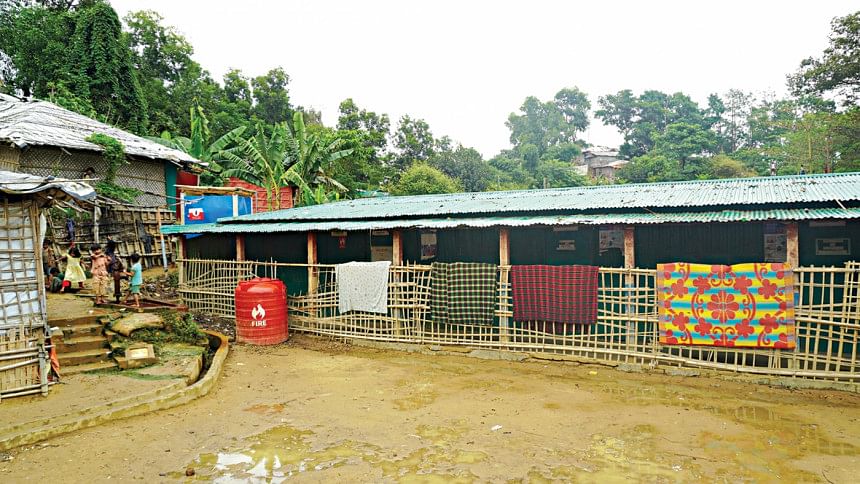Rohingyas holding their breath

Rohingyas in Cox's Bazar camps fear their homes may be destroyed if the Cyclone Mocha develops into a severe one and hits the coast.
"Our homes will not be able to stand the force of the cyclone if it is a severe one," said Abdul Amin, a resident of Balikhali Rohingya camp in Cox's Bazar's Ukhiya upazila.
He said the planned cyclone shelters may not be stronger than their homes.
Amin, who came to Bangladesh from a village near Maungdaw township in Myanmar in 2017, lives with his four-member family in a house made of bamboo and tarpaulin at the sub-camp-8 of Balukhali.
"If the cyclone is severe, we will lie on the ground together at a particular place," said a worried Amin.
Amir Ahmed, another Rohingya and a father of six, said his children asked him where would they go if the cyclone hits the camp. He told them that they would move to a shelter which is stronger than their shanty.
"Allah will save us all," he said.
Mohammad Islam, a sub-majhi (community leader) of camp-8, said, "The camp in-charge directed us to move to safety if the cyclone is severe. I conveyed the message to our camp residents."
He said five families were at risk of landslides in his sub-camp and they will be evacuated, if necessary.
The Office of the Rohingya, Relief and Repatriation Commissioner (RRRC) in a coordination meeting on May 11 decided to use the learning centres, women-friendly spaces, multipurpose centres, mosques and the other facilities insides the 34 Rohingya camps in Ukhiya and Teknaf as cyclone shelters for the about 12 lakhs people living there.
Rohingyas said there are no permanent structures in the camps.
Most of the planned shelters at the Balukhali camp are made of steel frames, with the roofs are of tarpaulin and bamboo or corrugated iron sheets .
Around 2,000 learning centres, women-friendly spaces, multipurpose centres, and mosques will be used as cyclone shelters, if needed, said RRRC Mohammed Mizanur Rahman.
He said Rohingya volunteers will be ready to take fellow refugees to those centres in the event of any emergencies.
"There are hills between the refugee camps and the sea. So, we don't expect tidal surges in the camp area. Strong gusty wind might be a major problem for the Rohingyas as it can destroy the makeshift houses. That's why we have prepared those centres as shelters.
"If rain continues for two to three days after the landfall of the cyclone, there will be a risk of landslides inside the camps. In that case, around 15,000 Rohingyas will be evacuated from the risky areas in camps 6, 7, 9 and 10," Mizanur added.

 For all latest news, follow The Daily Star's Google News channel.
For all latest news, follow The Daily Star's Google News channel. 



Comments